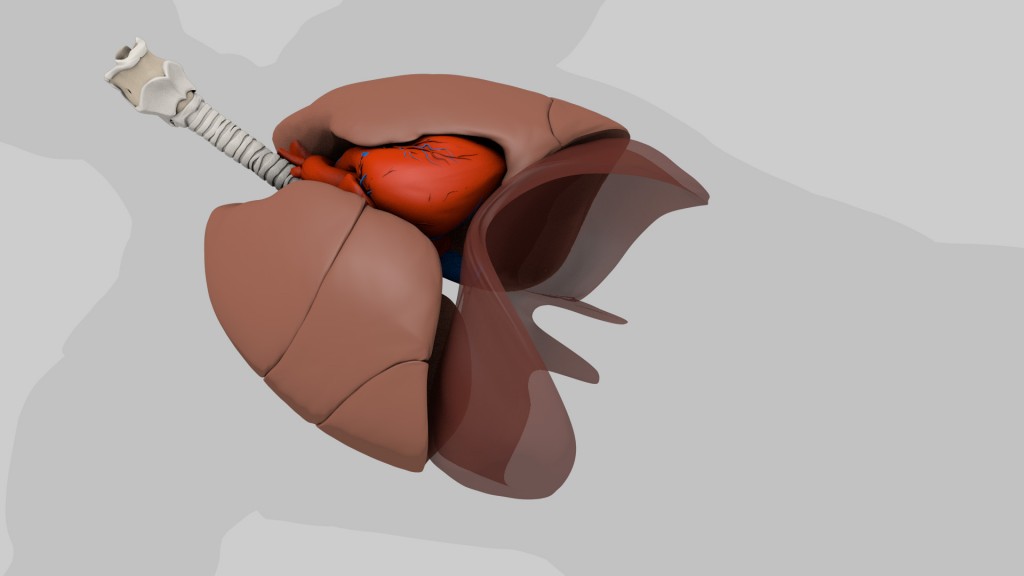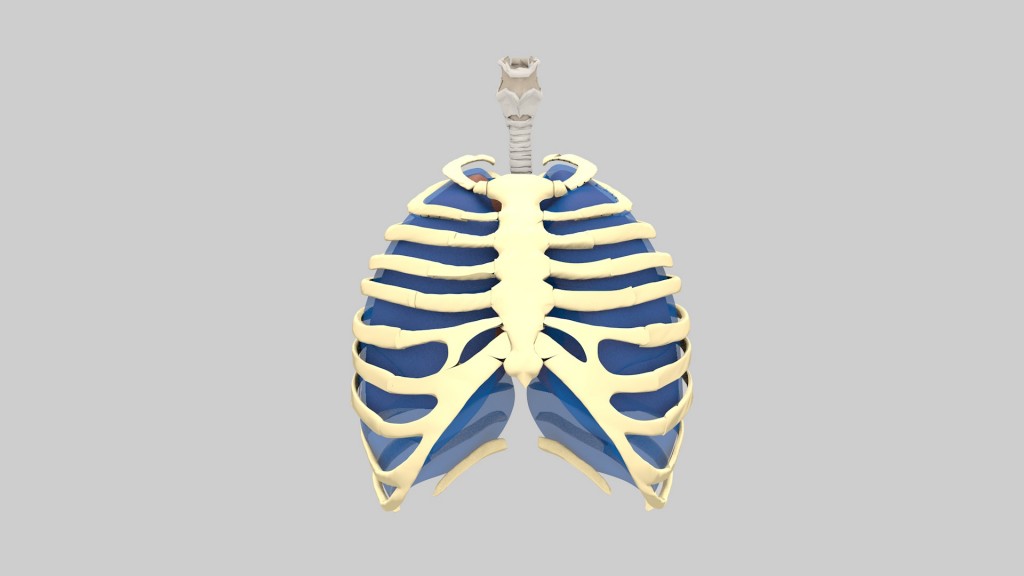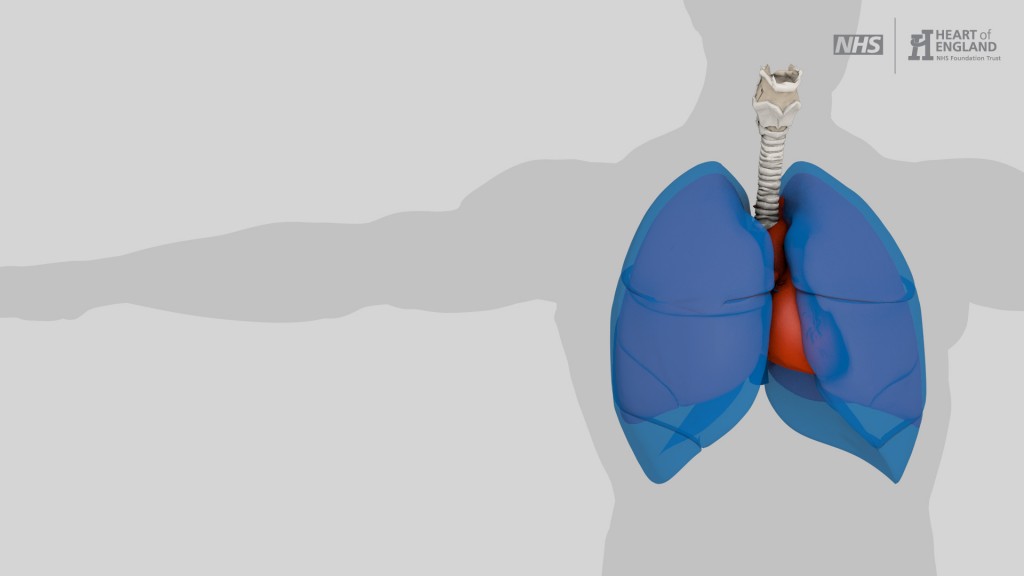Knowing about your chest can help you understand conditions and treatments.
When you breathe in through your nose or mouth, the air passes down your windpipe (trachea) which then divides into two airways (bronchi) one going into each lung. These airways then divide into smaller airways (bronchioles) which end in tiny air sacs called alveoli. You can imagine these to be like a bunch of grapes on a branch. Within the tiny air sacs, oxygen goes in to the bloodstream and waste gas (carbon dioxide) comes out.
- Ribs
- The spine
- The breast bone (sternum)
- Muscles
The diaphragm is a muscle which sits beneath the lungs, separating them from the abdomen. The ribs sit around the sides and the top of the lungs. Small muscles connect the ribs to each other. The ribs also attach to the spine at the back and the breastbone at the front. The diaphragm and small muscles between the ribs produce the movements of breathing.
Large muscles lie on top of the ribs and produce movements of the shoulder. You can easily see the large muscles on yourself.
The major nerves and blood vessels to your arms are behind your collar bone (clavicle) and inside your armpit.
- The big blood vessels that lead to and from the heart (the aorta, pulmonary blood vessels and vena cava)
- Windpipe and 2 main airways (Trachea, left and right main bronchus)
- Food pipe (Oesophagus)
- Lymph glands
- Thymus gland – this is part of the immune system, it turns into fatty tissue as you get older
- The thyroid gland may reach into the mediastinum if it is enlarged
- Small nerves – they have a lot of different functions, some important functions include moving the vocal cords and moving the diaphragm




